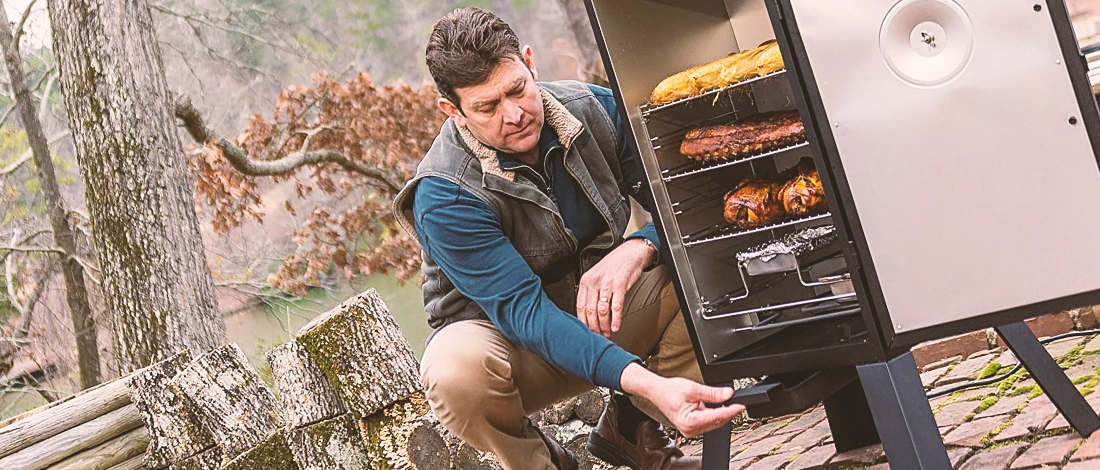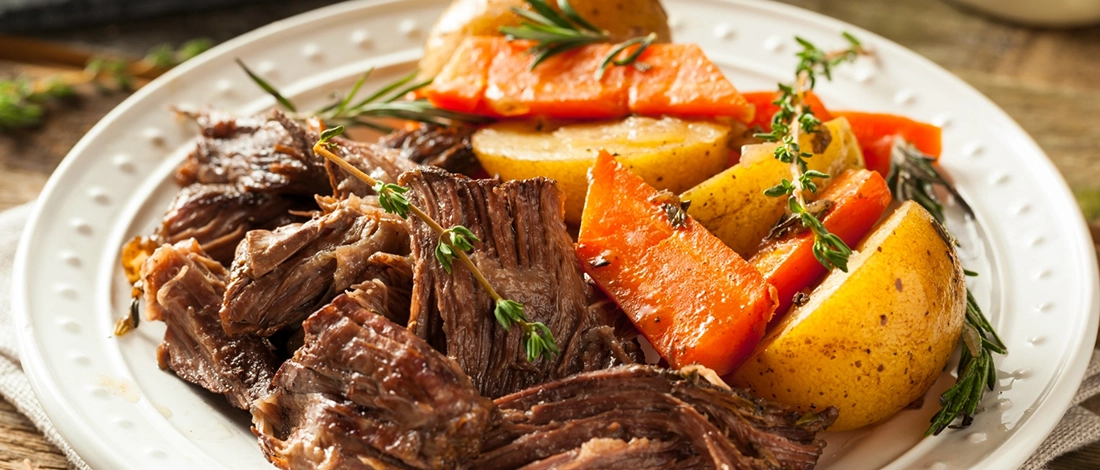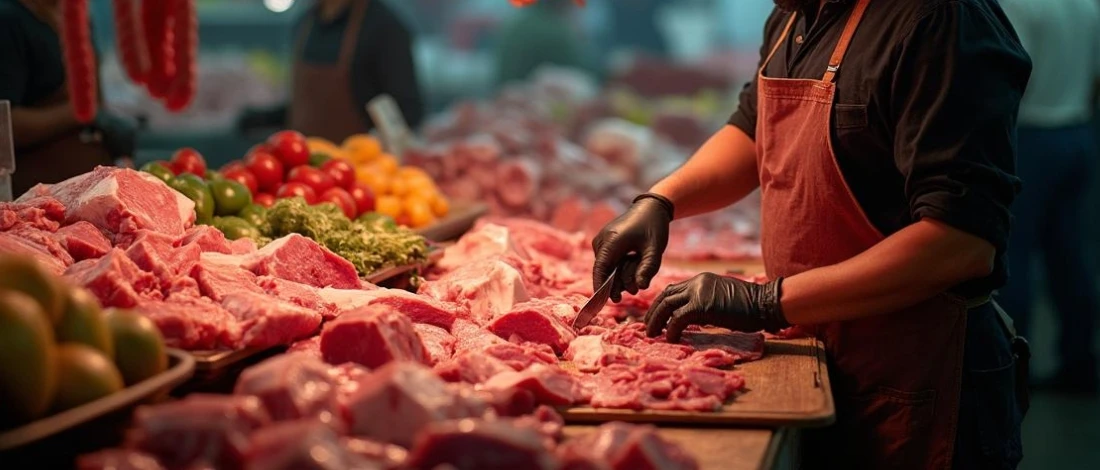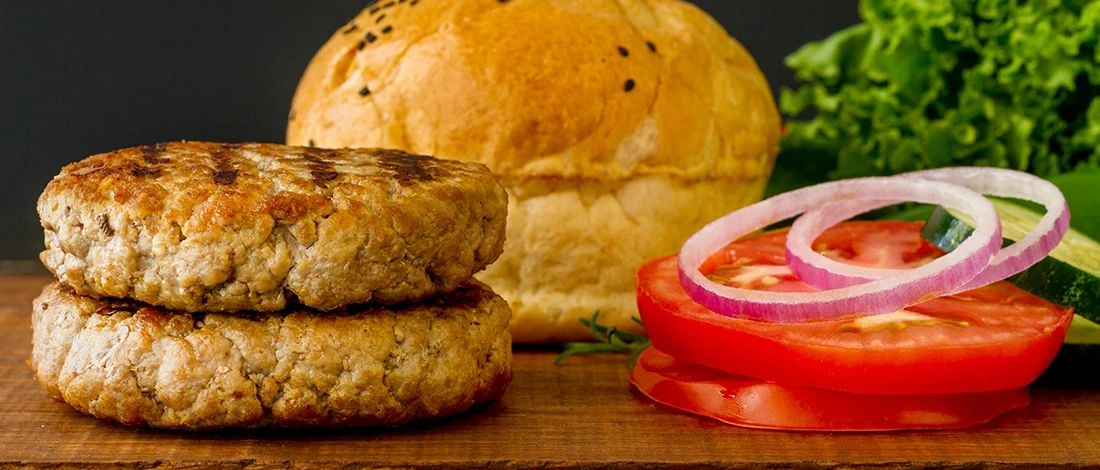As a die-hard carnivore who’s had his fair share of beef, I am constantly asked about the differences between different cuts of beef.
Roast beef and pastrami frequently make it to this list.
After hours of research and a long conversation with my local butcher, I will tell you more about what sets these cuts apart.
At Carnivore Style, we’re passionate about exploring the nuances of every cut to help meat lovers get the most from their carnivore journey.
Read on.
Quick Summary
- Roast beef and pastrami are both popular deli meats, but they differ in origin, cut, cooking method, flavor, and nutrition.
- Roast beef is typically oven-roasted, has a rich, hearty flavor, and is often served as a main course or in sandwiches.
- Pastrami is cured, smoked, heavily seasoned, and has a more intense flavor, often served in sandwiches or as part of various dishes.
6 Factors that Differentiate Roast Beef from Pastrami
Carnivore Style’s team has found that the differences between these cuts are influenced by factors such as texture, fat content, and the specific cooking methods that best highlight each cut’s unique flavor.
1. Origins
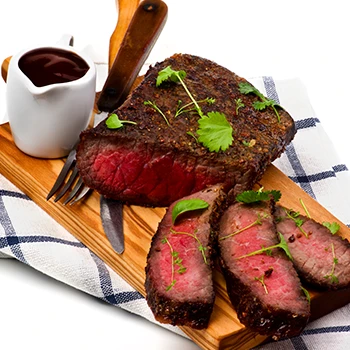
Roast beef is a very traditional beef dish served in the United States and Europe. It is strongly associated with England and has even been used as a nickname for English citizens [1].
This meat is usually served as the main course of a meal, but thinly sliced roast beef can also be used in sandwiches and other dishes.
Pastrami, on the other hand, is a type of smoked and cured meat that originated in Romania, where people needed a way of preserving meat.
Jewish immigrants brought pastrami to the United States in the 19th century, and it has since become popular deli meat.
2. Cut of Meat
As the name suggests, roast beef is simply beef.
The finest cuts of meat used for roasted beef are the following:
- Tenderloin
- Shoulder
- Ribeye
- Tri-tip roast
- Top sirloin tip roast
- Bottom round steak
- Top round steak
- Roasted prime rib
These result in a juicy and flavorful roast that is perfect for the main course [2].
Unlike roast beef, pastrami was initially made from a variety of meats like goose, lamb, and beef.
However, in the United States, it is now usually made from beef - though you can find some turkey and lamb pastrami sold as healthier meats.
The traditional pastrami is made from the navel (or belly), which is taken from the lower abdomen of the cow. This cut is fatty and flavorful, making it perfect for pastrami.
Today though, there are other cuts of beef that are being used to make pastrami. These include chuck roast, beef round, and beef brisket, which are tougher cuts of meat.
Some people prefer this type of pastrami because they think it has a more intense flavor. Beef brisket is also cheap, so a good choice for pastrami.
3. Cooking Methods

Unlike pastrami, roast beef is often roasted in an oven at a high temperature. This allows the outside surface of the steak to form a crust.
It gives the roast beef a nice flavor and also helps seal in the juices. This dish can be served as rare, medium, or well-done.
That said, roast beef used for deli meat is often cooked using a different method. In this case, the beef is slow-cooked at lower temperatures until it is tender.
This is done because most people do not want their roast beef to be crusted on the outside.
The process of making pastrami is significantly more complicated than roast beef. First, the raw meat is cured in a highly concentrated kosher salt and brown sugar mixture known as brine.
“The cuts of beef for pastrami are pickled one at a time and injected with a proprietary brine to ensure that juices and flavors penetrate the meat thoroughly.”
- Food Insider YouTube Channel
Curing meat through the brining process helps to add flavor and is a type of food preservation.
After the brining process is complete, the meat is heavily seasoned with various spices, that can include bay leaves, juniper berries, allspice, cloves, paprika, black peppercorns, coriander, garlic, fennel, and mustard seeds.
The pastrami is then smoked for 6-12 hours. The smoking process gives pastrami its distinct flavor and helps preserve the meat.
Once the smoking is done, the pastrami is steamed until it is tender. This final step helps to make the meat easier to slice and chew.
Pastrami and roast beef are often cut into thin slices and served cold as lunch meats. Thus, both pastrami and roast beef deli meats can be used on sandwiches.
4. Flavor
Roast beef has a rich, hearty flavor that is perfect for the main course. The addition of spices and herbs enhances the taste of the meat, but it is not as intense as pastrami.
Pastrami has a strong flavor due to all the spices used to flavor the meat.
In addition, the smoking and curing processes also add to the intensity of the flavor.
Some people find the taste of pastrami to be too strong and prefer roast beef instead.
5. Serving
Roast beef is traditionally served as the main course of a meal with sides of vegetables and potatoes. In England, it is often served with Yorkshire pudding as a side dish; in America, black pepper, green beans, and mashed potatoes.
"A man who is not touched by the earthy lyricism of hot pastrami, the pungent fantasy of corned beef, pickles, frankfurters, the great lusty impertinence of good mustard is a man of stone and without heart.
- Herb Gardner, Playwright & Artist
You can also use this meat in sandwiches. Some condiments that go particularly well with roast beef sandwiches are horseradish sauce, mustard, and ketchup.
Standard sides include fries, coleslaw, baked beans, and potato salad.
Pastrami is most commonly served as sandwich meat on rye bread with mustard. However, it can also be eaten alone in a few Italian dishes or in salads or pasta.
You can also eat it with sides of macaroni salad, potato chips, coleslaw, and pickles.
6. Nutrition

Pastrami and roast beef do not have the same nutrition profile [3].
Per the FDA, a 3-ounce serving of roast beef deli meat contains approximately:
- Calories: 115
- Protein: 18.6g
- Fat: 3.7g
Pastrami is a bit higher in calories, protein, and fat than roast beef [4].
A 3-ounce serving of pastrami has approximately:
- Calories: 147
- Protein: 21.8g
- Fat: 5.4g
Related Articles:
FAQs
Is Pastrami Bad for You?
Pastrami is not bad for you, but roast beef is generally considered your healthier option.
Pastrami is made with cured meat, which results in it being high in sodium nitrite. In addition, the smoking process introduces hydrocarbons that are potentially harmful to your health.
Is Roast Beef or Pastrami Harder to Prepare?
Pastrami is harder to prepare than roast beef because it is cured and smoked, which is a more complicated process.
Roast beef can be ready in just a few hours, while pastrami takes days or weeks to prepare.
Is Pastrami the Same as Corned Beef?
Pastrami is not the same as corned beef. They are both salty and brined meat, and corned beef is made from beef brisket.
Like pastrami, corned beef is cured. However, corned beef is made with corn syrup and cured in pink salt, giving it a pinkish tinge.
It is often served in a Reuben sandwich with Swiss cheese, Russian dressing, and sauerkraut.
Which One is Your Favorite: Pastrami or Roast Beef?
There is no clear winner when it comes to pastrami vs roast beef. It really depends on your personal preferences.
If you like the taste of intense flavors, then pastrami may be the meat for you. However, eat roast beef if you prefer a more beefy flavor.
Helga Dosa, CEO and founder of Italy Best, says that if you are looking for meat that is richer in taste, pastrami might be a better choice as it is usually made of the beef brisket's navel end, and is heavily seasoned, cured, and even smoked. If you are looking for meat that is easier to prepare, choose roast beef.
Regardless of your choice, we recommend procuring your meat from a reputable meat delivery company.
This will ensure that you get high-quality meat full of flavor. Click here for our roundup of the best meat delivery companies we’ve compiled after a full of year of testing.
References:
- http://news.bbc.co.uk/2/hi/uk_news/2913151.stm
- https://www.beefitswhatsfordinner.com/cuts/collection/33339/best-beef-cuts-for-oven-roasting
- https://fdc.nal.usda.gov/fdc-app.html#/food-details/174570/nutrients
- https://fdc.nal.usda.gov/fdc-app.html#/food-details/170204/nutrients


